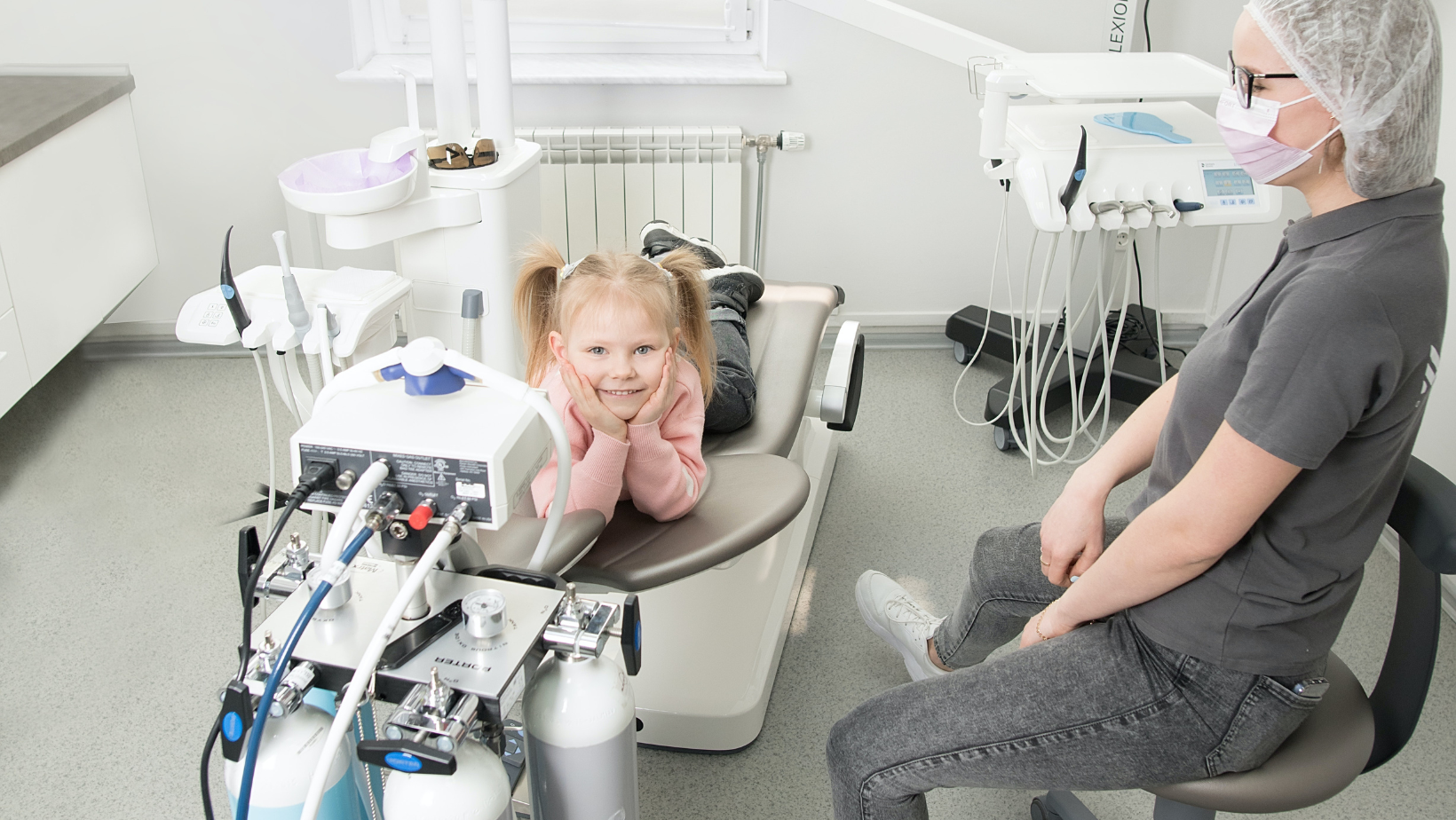Dental treatment under sedation for kids: What parents need to know

If the word ‘dentist’ has your child running to hide under their bed, then you’re not alone. Even the bravest little health heroes can feel nervous about trips to the dentist – especially if they know they have a big procedure coming up. This is where dental treatment under sedation can be really helpful to put both you and your child at ease.
Dental treatment under sedation is all about helping patients cope with procedures they may otherwise struggle with such as a more complicated tooth extraction. Here’s everything you need to know about dental treatment under sedation to help determine (along with the advice from your paediatric dentist) if this could be an option for your child.
WHAT IS DENTAL TREATMENT UNDER SEDATION?
In some cases your child’s paediatric dentist might recommend that they be given sedation to help them relax and to create a more comfortable, safe and effective environment in which they receive treatment in.
Sedation is a technique used to help transition children into a sleep-like state while allowing them to remain conscious throughout the treatment. Often they will feel chilled out during their appointment. They should feel calm and comfortable but awake, in control and able to communicate.
WHAT TYPES OF SEDATION ARE AVAILABLE?
There are three main types of sedation used to provide children with the most pleasant dental experience. You and your paediatric dentist can discuss several factors when deciding which sedation option is most suitable. The type of procedure, your child’s health history, allergies and their anxiety level are all considered when determining which approach will be best for them.
The three main types of sedation used in paediatric dentistry are:
Inhalation Sedation
This is the least invasive sedative. You might know it as ‘laughing gas’ or ‘happy gas’. With inhalation sedation your child breathes in nitrous oxide combined with oxygen. It works to relax and decrease pain sensitivity. It takes just a few minutes to start working, has no after effects and tends to wear off quickly following the procedure.
Oral Sedation
This sedative comes in the form of a tablet or liquid. It is the most commonly known sedative in sedation dentistry. It’s usually taken an hour before the appointment. Depending on the dose required, it can range from minimal to moderate in effect. It makes your little one drowsy though they often remain awake. If they do fall asleep, usually just a gentle shake will awaken them. Unlike inhalation sedation, it can leave them feeling a little groggy after the procedure.
Intravenous (IV) Sedation
Intravenous (IV) Sedation is sometimes known as ‘twilight sedation’. It is moderate in effect and involves receiving the sedative drug through a vein in your child’s arm. This means it goes to work quickly. IV Sedation usually takes just a few minutes to take effect. As with oral sedation, IV sedation might leave your little one feeling a bit drowsy afterwards.
IS TREATMENT UNDER SEDATION SAFE FOR CHILDREN?
For most children, treatment under sedation is very safe and effective when administered by an experienced dentist.
During a consultation, your dentist will go over your child’s medical history. They will also assess whether your little one is an appropriate candidate for sedation and ask about any medications they might be taking. They will explain the process and any risks in full to you and ensure all your questions are answered.
We work closely with paediatric anaesthetists whose role is to ensure your child is comfortable and pain free. The anaesthetist will stay with your brave little one at all times during the operation and monitor them closely.
In Australia, specialist paediatric anaesthetists are among the world’s most highly trained doctors, having spent years undergoing training in anaesthesia, pain control, resuscitation and managing medical emergencies.
HOW TO LOOK AFTER YOUR CHILD POST SEDATION
This will depend on your child’s case, what procedure was performed and what sedation was administered. We will walk you through in detail what you should do after the procedure during your initial visit, covering things like what to look out for, pain relief and management and types of foods to eat after.
THE HEALTH OF YOUR CHILD’S TEETH IS KEY
At Macarthur Paediatric Dentistry, our goal is to help your child achieve and maintain excellent dental hygiene that will last a lifetime. We work with you to make your child’s dental visit as safe and comfortable as possible. Sometimes that means general anaesthesia or sedation may be beneficial.
We hope this article has answered some questions, dispelled some concerns, and shed some light on what is involved in dental treatment under sedation.
If your child is overdue for their next appointment give us a call on (02) 9188-0202 or book online here.
This article is intended to promote understanding of and knowledge about general oral health topics and to help begin the conversation with your children’s dentist. It should not be used as a substitute for professional advice, diagnosis or treatment. Always seek the advice of your health care professional prior to incorporating this as part of your child’s diet or health regimen.

